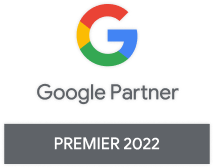Google Ads Optimized Targeting: When to Use It and How to Turn it off?
Google Ads remains one of the best ways for businesses to reach and convert their target audiences. Yet making sure your ad campaigns achieve success with specific audience segments is easier said than done, with precise audience targeting taking considerable research and skill.
Google’s optimized targeting feature removes substantial guesswork from the equation to help businesses overcome this issue. By taking cues from the landing page on your website, customer interests, and creative assets, optimized targeting can automatically adjust your strategy to find a new audience with a significant chance of converting.
Keen to find out more? Optimized targeting is available for Google Ads Display campaigns, Discovery campaigns, and Video campaigns using Sales, Leads, and Website Traffic goals. Here, we look at everything you need to know about how optimized targeting works and when it will give your campaign’s performance the boost it needs.
What is Optimized Targeting?

Put simply, optimized targeting studies your existing targeting parameters, including keywords, creative assets, landing pages, and custom segments, to find more people with a high chance of converting.
By considering various targeting signals, this algorithmic Google Ads feature identifies ways to reach better-performing traffic, helping you achieve your desired campaign goals.
Going far beyond remarketing audiences, optimized targeting automatically considers your current campaign setup to find profitable audience segments and acquire new customers primed to convert.
Meanwhile, you can easily enhance the results of specific audience segments, as optimized targeting systematically replaces poorly performing keywords with effective alternatives.
How Optimized Targeting on Google Ads Works
If you’ve been achieving success with Google Ads targeting using manually selected audience segments, there’s a good chance you don’t feel the need to change.
However, optimized targeting can help your campaigns achieve even higher performance by taking the information you provide and driving more impressions, clicks, and conversions from like-minded consumers you don’t even know to exist.
Based on real-time conversion data, the optimized targeting algorithm can target people with remarkably similar indicators that your specific audience segments overlooked.
For example, you might think only people aged 18-24 are interested in your product, yet optimized targeting can adjust your campaign to reach older demographics looking to purchase. Naturally, this can skyrocket your ad campaign’s performance.
How does Optimized Targeting Differ from Audience Expansion?

For those more familiar with PPC advertising and the myriad of Google Ads targeting options, you might wonder how optimized targeting differs from another feature known as audience expansion. While they might appear similar on the surface, a few distinct differences might make optimized targeting more suitable than audience expansion for your campaign.
Audience expansion attempts to increase conversions by taking your manually selected audience segments and expanding them to similar audience segments. Although optimized targeting is comparable to audience expansion, it uses real-time conversion data to target people most likely to convert.
The more fluid approach seen in optimized targeting means it can, for example, consider the recent search history of recent conversions. Then, it uses these signals, alongside others like customer data segments, keywords, and topics, to target people with a higher probability of helping your business achieve its goals.
When to Use Optimized Targeting?
Since the addition of optimized targeting to every Google Ads account, this relatively new feature is automatically turned on when you launch a new campaign. Whether you’re just getting to know Google Ads or have executed countless successful campaigns, this feature is a stellar way to rapidly improve your targeting and reach.
Optimized targeting might also prove effective for campaigns featuring a limited audience or an audience that may have trouble spending. If you’ve started a campaign yet it’s not delivering the ideal results, switching to optimized targeting will swiftly expand your reach and drive your campaign performance.
If you’re launching a new ad campaign, but don’t fully understand the target audience, optimized targeting can also help your strategy achieve initial results. However, keep a close eye on how your budget is being spent, as campaigns with small target audiences may pursue opportunities that go against your objectives.
When to Turn Off Optimized Targeting
While optimized targeting undoubtedly offers some significant advantages for display campaigns and video campaigns, many experienced digital marketers begin their Google Ads campaigns with optimized targeting turned off.
This is because running a campaign based on manually selected audience segments first helps determine whether your creative assets successfully produce conversions. By waiting to see how the campaign performs without optimized targeting, you’ll have a good idea whether this strategy is worth pursuing further.
Once you’ve had time to assess your campaign performance and implement carefully considered data-driven changes, you can switch on optimized targeting to discover similar audiences more likely to convert.
You should also turn off optimized targeting when you want previous customers to purchase your products and services again. As you’re looking to drive interest from existing customers, focusing your attention on those definitely familiar with your business makes sense.
Looking to turn off optimized targeting in Google Ads? To do so, navigate to the ad group settings, choose the desired campaign, and then select the ad group. From there, head to the settings page menu and expand the optimized targeting section to find the checkbox.
Enhance Your Audience Targeting Today
Targeting people with Google Ads is always a tricky task, whether you’re launching attention-grabbing search ads or exploring an innovative video campaign.
Yet the rise of optimized targeting can make achieving your business goals noticeably easier, with this targeting option finding potentially lucrative customers that you never even considered.
While Google Ads optimized targeting doesn’t solve every problem for businesses looking to gain the most benefit from their ad spend, it provides an impressive audience targeting alternative that could maximize your strategy’s performance.
To get the most out of any Google Ads campaign, partnering with an expert team is always a wise decision. The PPC specialists at First Page can help your business surpass its wildest expectations with wonderfully precise strategies.
Get in touch with our friendly team to discover how we can help your business reach its audience and outperform the competition.
















